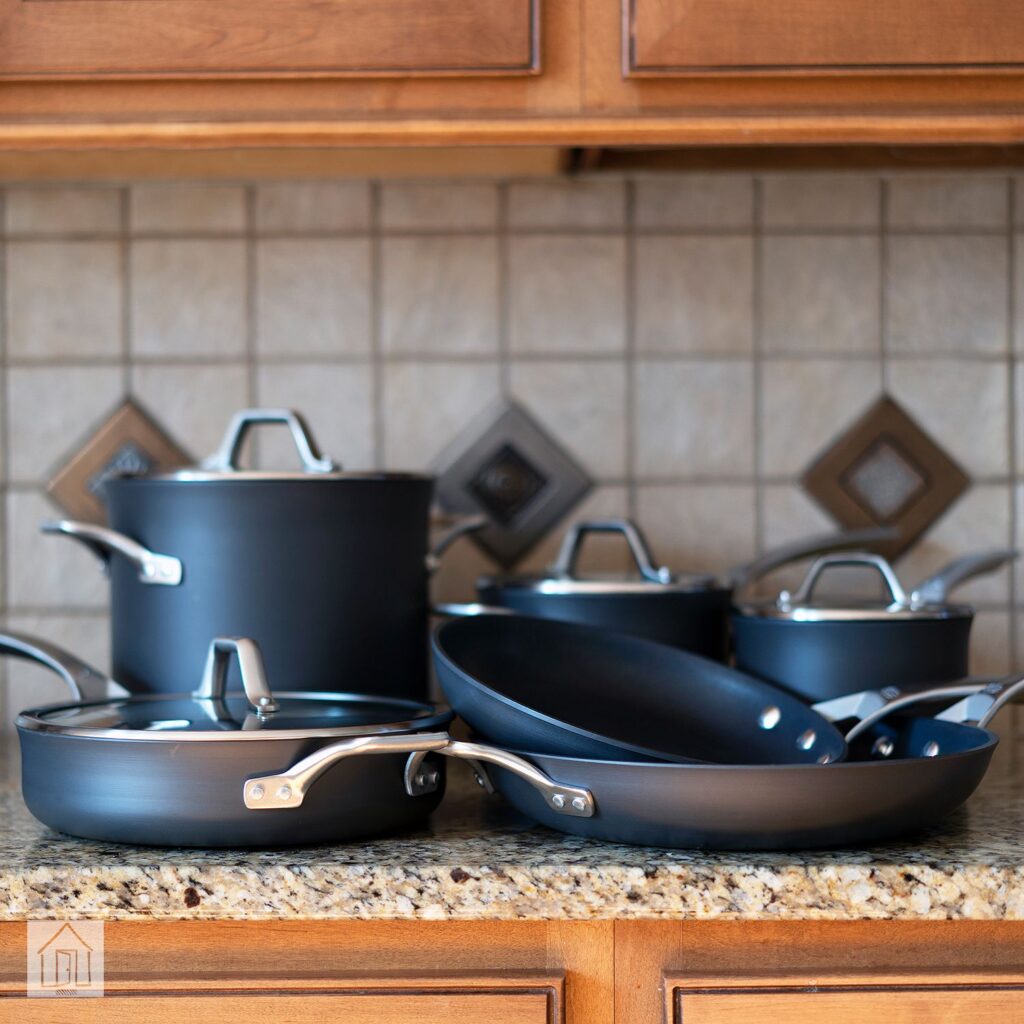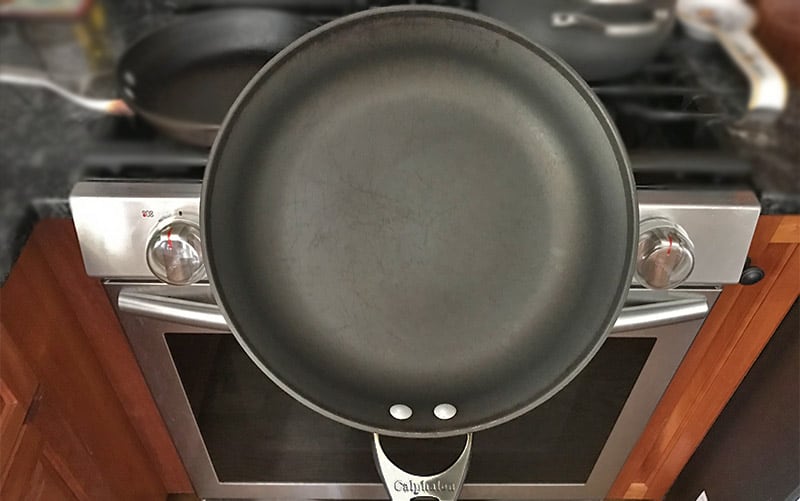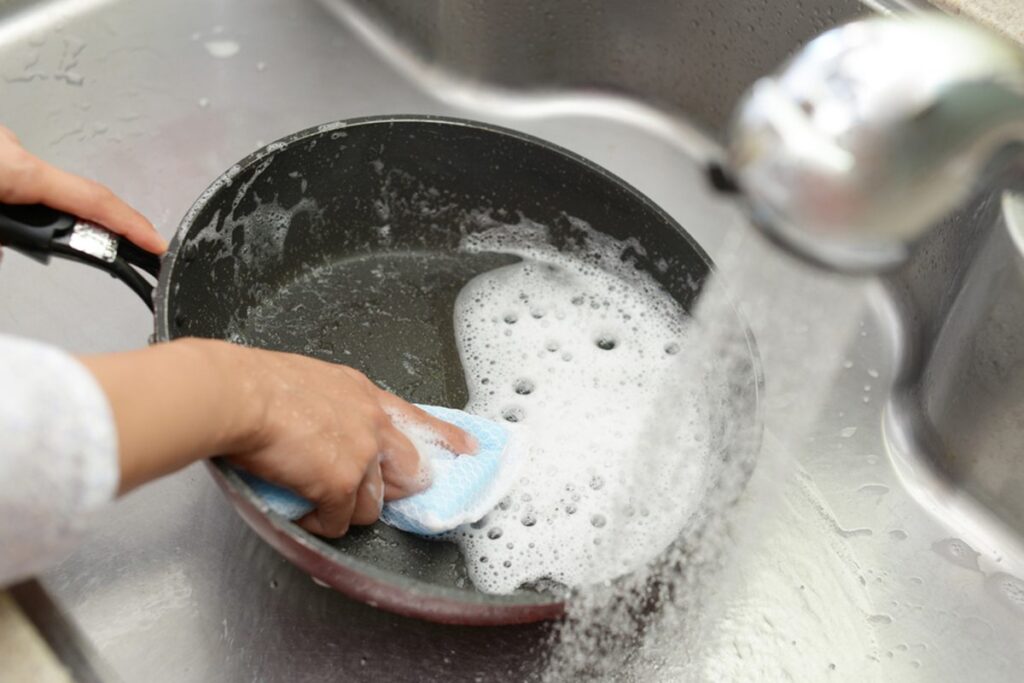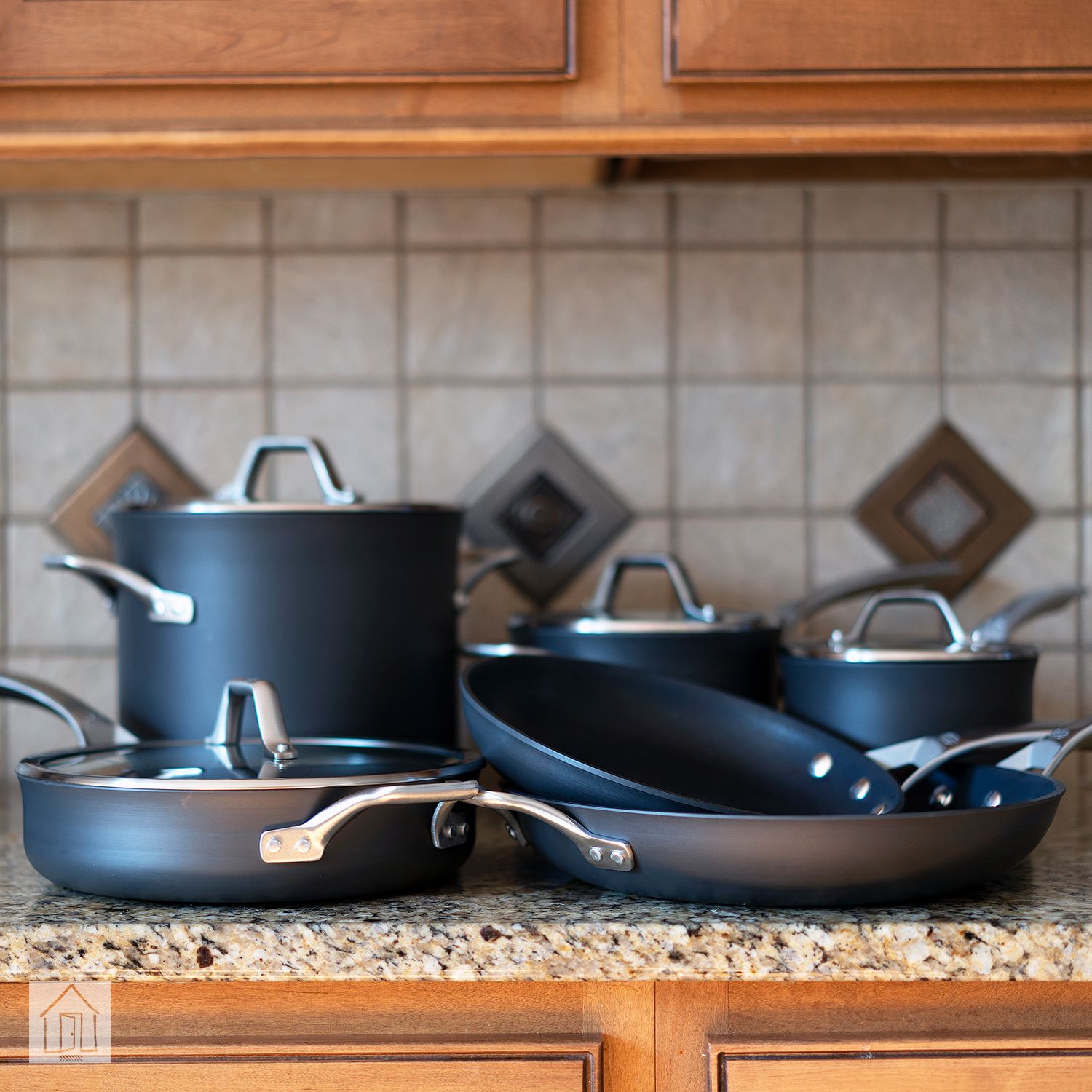Table of Contents
 Cookwares are the life and soul of the kitchen. With that being said, even the best quality of cookware, bakeware, and cutlery requires proper maintenance and cleaning after each and every use.
Cookwares are the life and soul of the kitchen. With that being said, even the best quality of cookware, bakeware, and cutlery requires proper maintenance and cleaning after each and every use.
Usually, people equip themselves with a high quality of kitchen cookware and gadgets. However, what they fail to realize is the fact that the maintenance and the cleanliness of those cooking essentials are as important as the quality of those essentials. Therefore, it is commonly observed that the cleanliness of those goods is often taken for granted.
If you think such is the case with you and perhaps you aren’t cleaning your pans the way they should be cleaned, then no need to give yourself the guilt-trip. As long as you’re willing to take care of the essentials you can always find a way to bring your cookware back to their former glory.
This particular blog is dedicated to the Calphalon pan users. Calphalon is a brand that is best known for its range of quality essentials and appliances for the kitchen. Speaking of range, Calphalon has an extremely wide catalog of cookware to choose from for your kitchen.
Although Calphalon pans and cookwares are super easy to wash and clean, however, there are times when a simple scrub just does not suffice. Therefore, in order to get rid of all those stubborn residues and properly clean your pan without damaging it, here’s what you need to do.
How To Clean Calphalon Oil Infused Ceramic And Non-Stick Pans?
Things You Will Require:
- Abrasive cleaners / soft bristle brush.
- Dishwashing detergent.
- Warm Water
Step 1: Rinse The Pan
Gently rinse your Calphalon ceramic pan under the stream of warm water. Swirl the water around to get rid of the built-up residue. Warm water usually helps get rid of the residue stuck on your pan, which makes the next step of the cleaning process much easier.
Step 2: Wash The Surface Of Calphalon Pan By Hand
Calphalon Oil Infused Ceramic and Non-stick Pans are not dishwasher safe. Therefore, it is recommended that you use your hands to wash the surface of your pan. This step contributes towards preserving of the coat and the finish of the pan for a longer run.
Step 3: Make Use Of Cleaners And Dishwashing Agents
While using the dish-washing agent make sure it does not contain any astringent or harsh chemical. Likewise, the cleaning pads should also be made of soft material or bristles.
Harsh chemicals and cleaning pads can potentially damage the surface of the pan which can damage the quality of your Calphalon Pan.

Step 4: Soak The Pan In Order To Get Rid Of Stubborn Residue
Often you will find a residue stuck on the surface of your pan which just wouldn’t budge no matter how much you try to remove it. In such cases, it is better to soak the Calphalon Pan under warm water for 5 to 15 minutes.
This not only protects the surface of your Calphalon Pan but it also seamlessly gets rid of that annoying residue you couldn’t get it to budge.
Avoid using sharp utensils. Utensils that are not approved by the manufacturer can potentially damage your cookware and may make scratches all over your pan.
Step 5: Clean Your Calphalon Pan Thoroughly
After making sure that your pan is thoroughly clean with no residue left to be taken care of, rinse your pan under running water. Preferably rub your hands against the surface of your pan. This process will wash away soapy water or any particle stuck on your Calphalon Pan.
Detergent water, if not properly washed, can create a thin layer on top of the surface of the pan. Therefore, it is advised that you wash your pan gently and carefully.
In case if you feel the Cooking Pan isn’t properly clean then you can repeat the 4th step all over again.
Step 6: Let Your Calphalon Pan To Dry Completely
Once the pan is spotless from all kinds of built-up than it’s time to let it dry. There are two recommended ways that can help you dry your pan completely
- Air Dry Your Pan: Hang your pan upside down in a well-ventilated area. This process helps get rids of water accumulated on the base and the exterior of the pan and completely air dries it.
- Wipe The Pan With Dry Cloth: All you need is a soft material, preferably cotton, to wipe your Calphalon Pan. Further, you can hang your pan and let it dry in a ventilated area.
How To Take Care Of Calphalon Pans?
There are times when we think we’re using our cookwares as carefully as we can, however, we unknowingly end up causing damage to it. Calphalon Pans are rather easy to take care of if maintained regularly and used carefully.
In order to avoid such a situation, here are certain things you should be careful about:
1) Let Your Pan Cool Down
Drastic temperature can permanently damage your cookware, including Calphalon Pan. When water comes in contact with hot frying pans it causes warps on the surface of the cookware.
Warps further deteriorates the overall quality of the pan, which eventually leads to food being cooked unevenly. Therefore, before proceeding towards washing your frying pan, let it rest for a good 15 minutes.
2) Handle Your Calphalon Pan with Care
Calphalon Pans are known for their high performance, scratch-resistance, and sturdy build. However, frequent rough use can result in an ineffective nonstick finish. In order to get the most out of your Calphalon Pan, protect it from coming in contact with harsh objects.

3) Never Use Sharp Objects on the Surface of The Pan
Avoid using steel or metal utensils for the purpose of scraping the food. What you can use is plastic, silicon, or manufacturer-approved utensils, spatula, or spoon.
Also, never cut ingredients when they’re inside the pan. This action can further cause scratches on the surface, permanently damaging the non-stick coat of the pan.
4) Use Special Cleanser to Polish Your Pan
Constant use can make your pan look worn out and dull. To restore your Calphalon Pan to its original shape and condition, you can use products like Calphalon Dormond Cleaner or any other non-stick cleanser and polishes.
5) Avoid Storing Food on Your Calphalon Pan
Calphalon Pan is not build to serve as a food storing container. With that being said, the acidic properties of the leftover food can permanently damage the interior of your pan.
Therefore, avoid using Calphalon Pan to store the leftover food in order to preserve the quality of your pan.
6) Store Your Calphalon Pans Properly
It often happens that we end up stacking our cookware on top of one another. This practice may help us deal with the mess of our kitchen, however, it can end up being the culprit behind the scratches on our cookware.
If being stacked up is the inevitable fate of your pan, then consider including a layer of towel or napkin between each pan. This minimizes the contact between each pan and protects the surface from any unnecessary damage.
